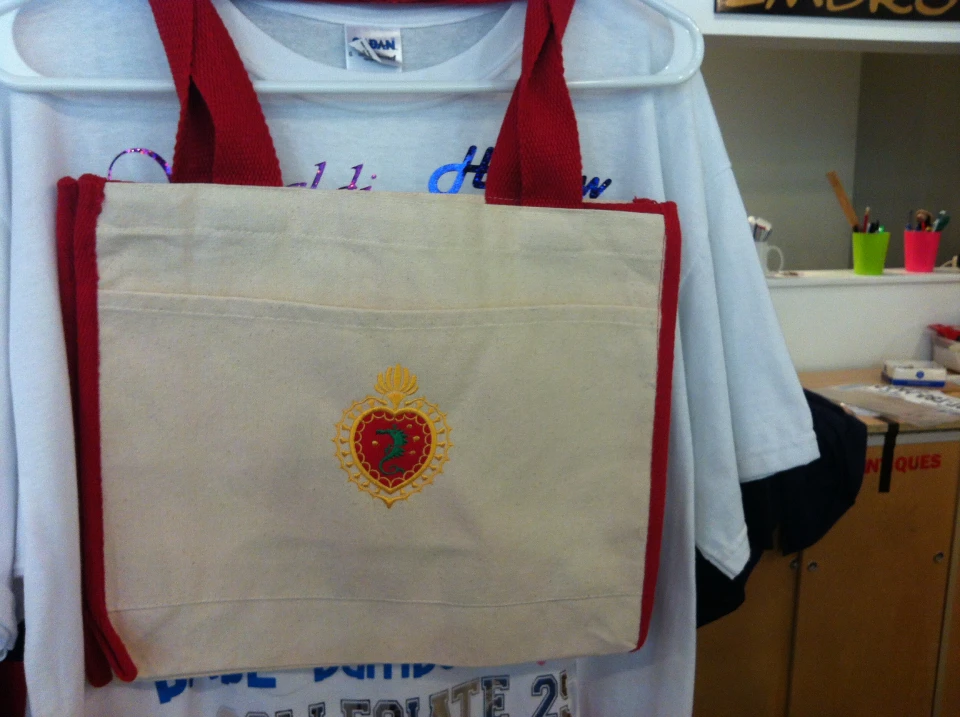Personalized School Uniforms with High-Quality Embroidery Solutions
The Art of Custom-made Needlework: Opening the Tricks to Creating Special and Remarkable Styles
Embroidery, a craft soaked in practice and artistry, holds within its intricate stitches the power to change material into a canvas of one-of-a-kind expression. The secrets to developing customized needlework designs that mesmerize the eye and leave a lasting perception lie in a fragile equilibrium of method, creativity, and focus to detail. As we dig right into the world of personalized needlework, we discover the nuanced interplay between string option, stitch intricacy, and design personalization that boosts a mere garment to a masterpiece. Join us on a trip through the art of personalized embroidery as we unravel the secrets behind crafting truly memorable and distinct creations.
Picking the Right Embroidery Threads
When selecting embroidery strings, what vital variables should you consider to make certain the most effective results for your customized styles? The option of needlework string is essential in determining the final result of your embroidered style. Among the key factors to consider is the product of the thread. Different materials such as cotton, polyester, rayon, and silk supply differing degrees of shine, longevity, and texture. It is necessary to select a string material that matches the material you are stitching on and straightens with the desired appearance of the layout.
Furthermore, the weight or density of the string plays a substantial duty in the appearance of the needlework. Thicker threads can add dimension and texture to your style, while finer strings are excellent for intricate information and tiny message. In addition, considering the shade fastness and washability of the string is critical to make certain that your personalized designs preserve their quality and vibrancy over time. By carefully evaluating these aspects and picking high-grade strings that satisfy your particular requirements, you can boost the aesthetic appeal and longevity of your stitched developments.
Checking Out Different Stitch Strategies
To look into the realm of 'Exploring Various Stitch Techniques', one have to comprehend the intricacies and subtleties that each stitching approach brings to the art of needlework. Different stitch methods not only include visual passion but additionally contribute to the general texture and measurement of the design. One prominent stitch technique is the satin stitch, which includes closely jam-packed parallel stitches to develop a smooth and shiny surface area, ideal for filling out shapes and producing bold describes.
On the other hand, the backstitch is a flexible technique commonly used for detailing and adding fine information. It involves stitching in reverse to create a strong line of needlework. Additionally, the French knot stitch adds a tactile element to layouts, excellent for creating textured accents like flower facilities or decorative touches.
Discovering various stitch techniques allows embroiderers to play with light, shadow, and deepness within their layouts, boosting the aesthetic appeal and artistic high quality of their embroidery projects. By mastering various stitching approaches, one can unlock unlimited possibilities for producing special and remarkable custom-made needlework items.
Incorporating Personalized Style Aspects
Having explored the intricacies of various stitch methods such as the satin stitch, backstitch, and French knot, the focus currently changes in the direction of integrating customized layout aspects in personalized embroidery tasks. Customized design components play a vital role in making embroidery tasks really unique and remarkable.
One more means to include individualized design components is by including icons visit here or themes that hold special definition to the recipient or show their passions and character. As an example, integrating a favorite flower, pet, or hobby-related sign can make the needlework design a lot more meaningful and individualized. Furthermore, picking colors that reverberate with the recipient or straighten with the intended motif can even more boost the personalization of the embroidery task.
Understanding the Art of Color Coordination

One key facet of color coordination is recognizing color concept. This consists of understanding how different shades communicate with each various other, the feelings they share, and how they can be incorporated to create aesthetically appealing styles. By applying color concept principles, embroiderers can produce unified shade palettes that improve the overall look of the style.
In addition, taking note of comparison is vital in helpful hints color coordination. Using contrasting shades can aid certain aspects of the layout pop, boost clarity, and develop an aesthetically dynamic embroidery item. By understanding the art of shade sychronisation, embroiderers can boost their layouts and create memorable pieces that resonate with customers and customers alike.
Enhancing Appearance With Advanced Needlework Stitches

French knots, as an example, are ideal for adding little, elevated dots to your design, imitating the appearance of grains or producing a distinctive surface. Bullion knots, on the various other hand, can be used to create twisted, ropelike aspects that add an extravagant feeling to the embroidery. Seed stitching entails little, scattered stitches that can fill out locations with a speckled structure, while turkey job develops cosy, dimensional accents reminiscent of pet hair or vegetation. Trying out with these innovative needlework stitches allows More Bonuses you to press the limits of typical needlework and develop genuinely one-of-a-kind and aesthetically enticing textures in your designs.
Conclusion
Finally, the art of personalized needlework entails a mix of picking the best threads, exploring numerous stitch strategies, incorporating personalized layout aspects, mastering shade sychronisation, and enhancing structure with innovative stitches. By comprehending and executing these key components, embroiderers can produce unique and unforgettable designs that display their imagination and ability. Embroidery enthusiasts can unlock the keys to creating stunning and custom pieces that stand out and leave an enduring impression.